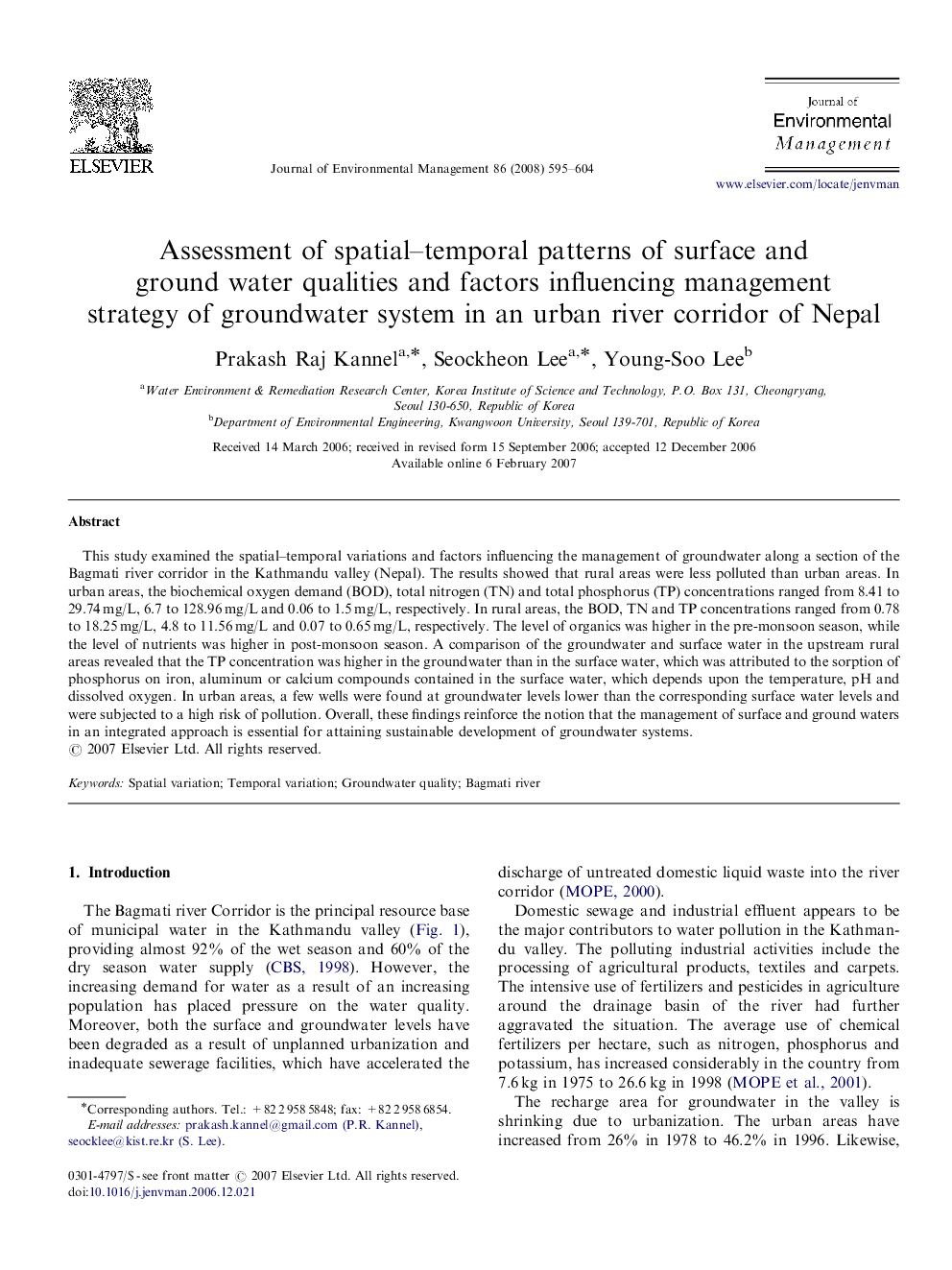| Article ID | Journal | Published Year | Pages | File Type |
|---|---|---|---|---|
| 1057851 | Journal of Environmental Management | 2008 | 10 Pages |
This study examined the spatial–temporal variations and factors influencing the management of groundwater along a section of the Bagmati river corridor in the Kathmandu valley (Nepal). The results showed that rural areas were less polluted than urban areas. In urban areas, the biochemical oxygen demand (BOD), total nitrogen (TN) and total phosphorus (TP) concentrations ranged from 8.41 to 29.74 mg/L, 6.7 to 128.96 mg/L and 0.06 to 1.5 mg/L, respectively. In rural areas, the BOD, TN and TP concentrations ranged from 0.78 to 18.25 mg/L, 4.8 to 11.56 mg/L and 0.07 to 0.65 mg/L, respectively. The level of organics was higher in the pre-monsoon season, while the level of nutrients was higher in post-monsoon season. A comparison of the groundwater and surface water in the upstream rural areas revealed that the TP concentration was higher in the groundwater than in the surface water, which was attributed to the sorption of phosphorus on iron, aluminum or calcium compounds contained in the surface water, which depends upon the temperature, pH and dissolved oxygen. In urban areas, a few wells were found at groundwater levels lower than the corresponding surface water levels and were subjected to a high risk of pollution. Overall, these findings reinforce the notion that the management of surface and ground waters in an integrated approach is essential for attaining sustainable development of groundwater systems.
